Understanding the difference between line and load connections is crucial when it comes to installing and wiring Ground Fault Circuit Interrupter (GFCI) outlets. GFCI outlets are designed to provide enhanced electrical safety by detecting ground faults and quickly interrupting the power supply to prevent electrical shocks. However, the proper installation of GFCI outlets requires an understanding of the line and load wiring distinctions.
In this article, we will delve into the intricacies of line vs. load GFCI connections, exploring their definitions, purposes, and the consequences of improperly distinguishing between the two.
By the end, you’ll have a clear understanding of how to wire GFCI outlets correctly and ensure the utmost electrical safety in your home or workplace.
What Is GFCI Connection?
The GFCI (Ground Fault Circuit Interrupter) connection is an essential electrical safety feature that helps protect individuals from electrical shocks [1]. It is designed to monitor the flow of current in an electrical circuit and quickly interrupt the power if it detects a ground fault or a leakage of electrical current. This interruption helps prevent potentially dangerous situations, such as electrocution or electrical fires.
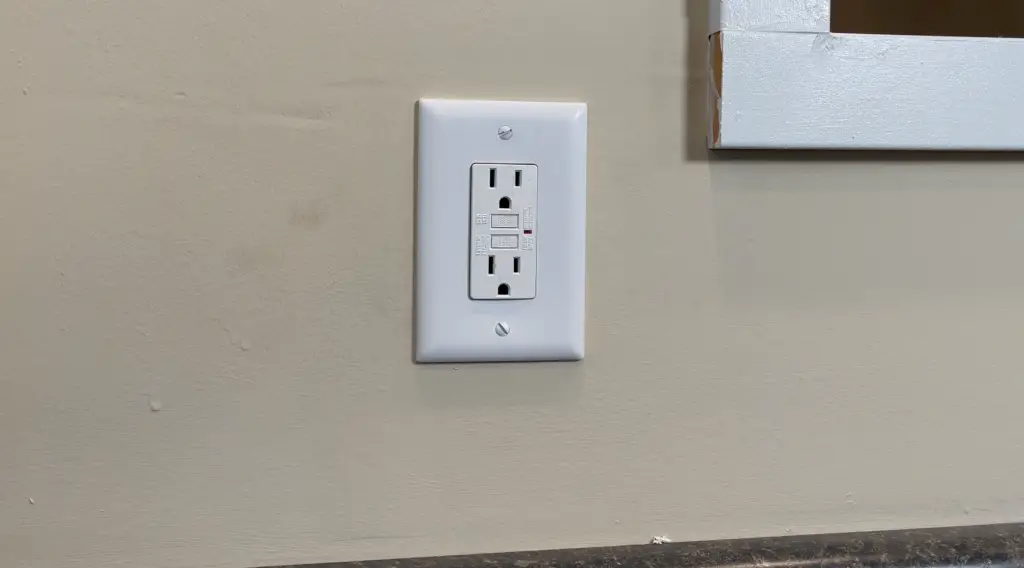
Where to Use a GFCI?
GFCI outlets are typically installed in areas where the risk of electrical shock is higher, such as bathrooms, kitchens, outdoor areas, garages, and basements. These locations often have a greater exposure to moisture, which increases the chances of electrical faults. By installing GFCI outlets in these areas, the risk of electrical accidents is significantly reduced.
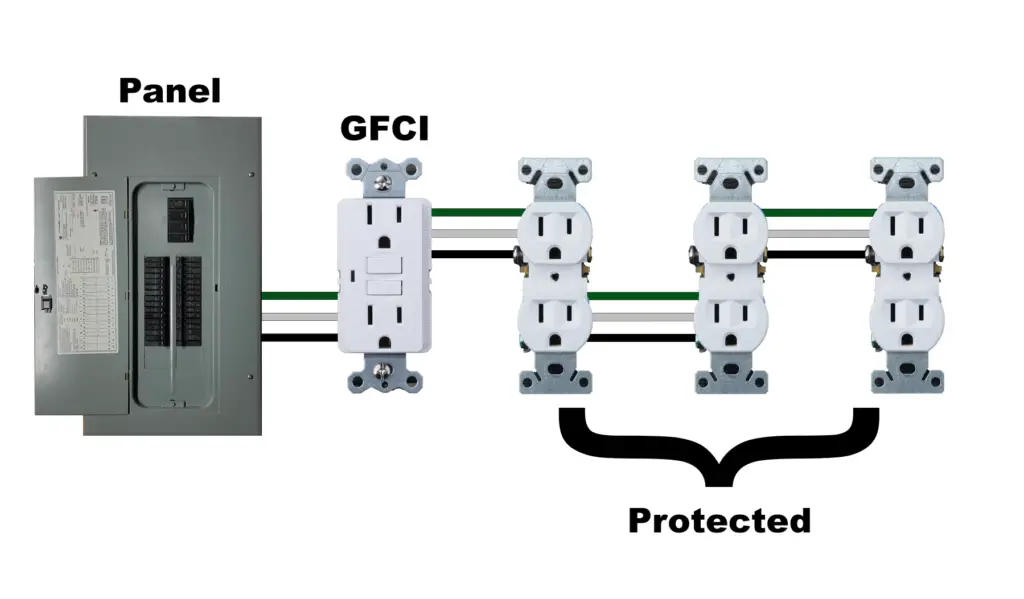
How to Wire a GFCI?
Wiring a GFCI outlet is a task that requires careful attention to detail to ensure proper installation and functionality. Here is a general guide on how to wire a GFCI outlet:
- Safety first: Before working on any electrical wiring, make sure to turn off the power supply at the circuit breaker;
- Remove the existing outlet: Start by removing the cover plate and unscrewing the outlet from the electrical box. Take note of the existing wiring connections;
- Identify the line and load wires: The line wires are the ones bringing power from the electrical panel, while the load wires continue the circuit to other outlets or devices;
- Connect the line wires: Connect the line (hot) wire to the line (hot) terminal on the GFCI outlet. The line (neutral) wire is connected to the line (neutral) terminal, and the ground wire is connected to the ground terminal;
- Connect the load wires: If you have additional outlets or devices that need GFCI protection, connect the load (hot) wire to the load (hot) terminal on the GFCI outlet. The load (neutral) wire is connected to the load (neutral) terminal;
- Secure the outlet: Carefully tuck the wires inside the electrical box, ensuring that they are not being pinched. Attach the GFCI outlet to the electrical box using the provided screws. Finally, attach the cover plate;
- Test the GFCI outlet: Once the wiring is complete, turn on the power supply and test the GFCI outlet using the built-in test and reset buttons. The test button should trip the GFCI and cut off power to the outlet, while the reset button should restore power;

It is important to note that these are general guidelines, and it is always recommended to follow the manufacturer’s instructions and consult a professional electrician if you are unsure about any aspect of the wiring process.
Difference Between a GFCI Outlet and a Regular Outlet
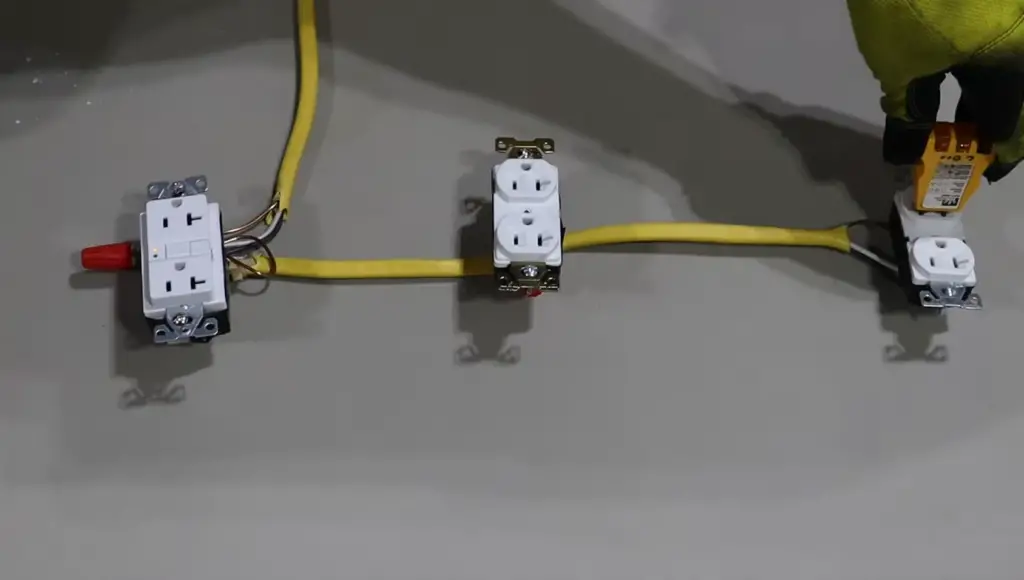
The main differences between the two types of outlets are as follows:
- Ground Fault Detection: GFCI outlets have built-in sensors that continuously monitor the electrical current flowing through them. If the GFCI detects a ground fault, where the current is leaking or taking an unintended path, it quickly shuts off the power to prevent potential harm. Regular outlets, on the other hand, do not have this feature and do not provide the same level of protection;
- Code Requirements: Due to the increased safety provided by GFCI outlets, they are required by electrical codes in specific locations, such as bathrooms, kitchens, garages, and outdoor areas. Regular outlets are not required to have this level of protection unless specified by local codes;
- Resetting Mechanism: GFCI outlets have a reset button that must be pressed to restore power after a trip or fault is detected. Regular outlets do not have this feature and do not require a reset [2];
It is worth noting that GFCI outlets can be installed in place of regular outlets to provide enhanced electrical safety, especially in areas prone to moisture or with a higher risk of electrical accidents.
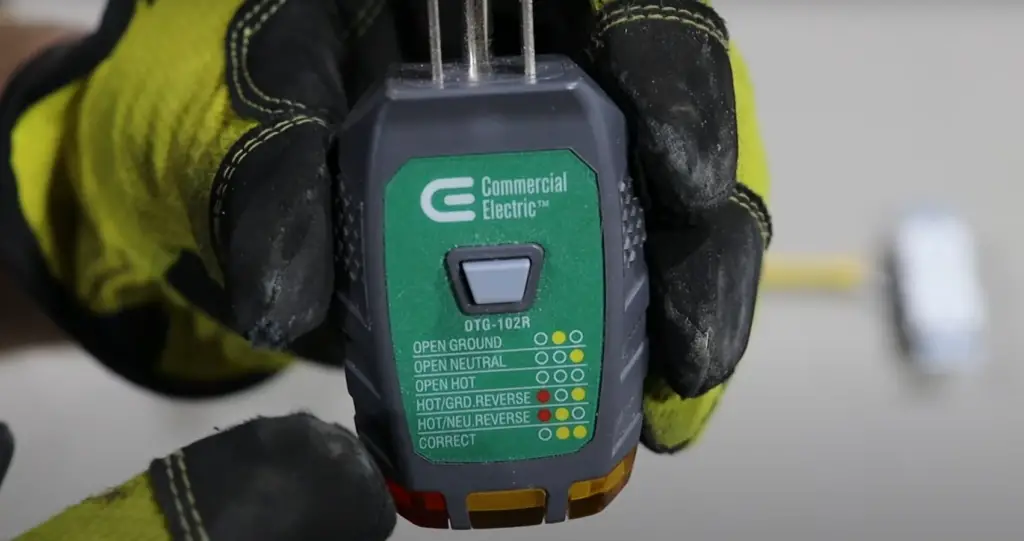
Types Of GFCI Connection:
- Line Connection: The line connection refers to the incoming power supply that connects directly to the GFCI outlet. This is where the electrical current enters the circuit;
- Load Connection: The load connection refers to the downstream wiring that continues the electrical circuit from the GFCI outlet to other outlets or devices. This allows the GFCI protection to extend to additional areas;
- Ground Connection: The ground connection provides a path for fault currents to flow safely to the ground, reducing the risk of electrical shock. It is an essential part of any electrical system and should be properly connected when wiring a GFCI outlet;
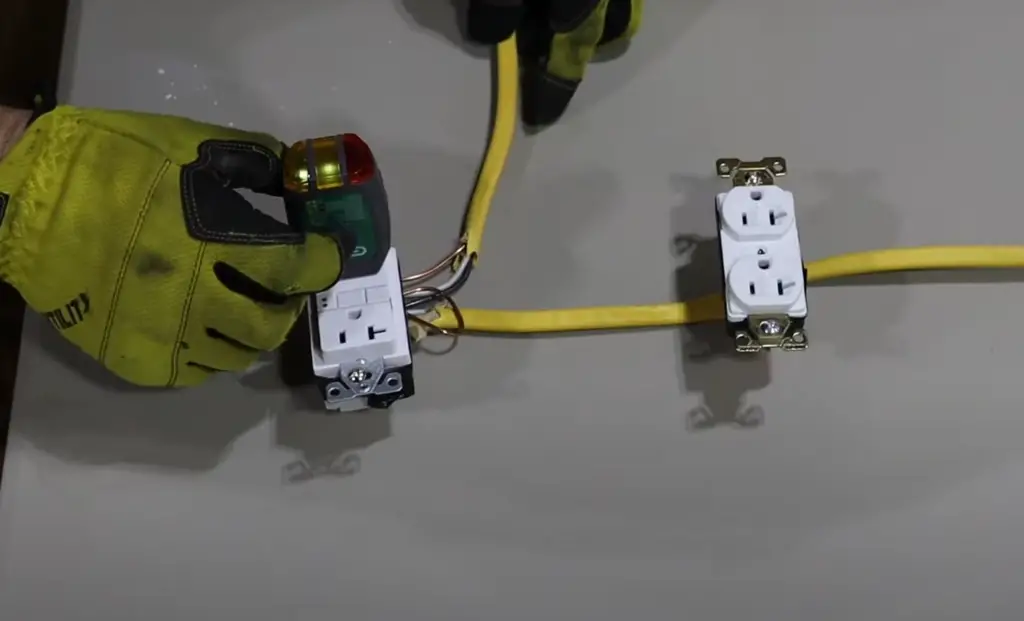
Differentiating Line and Load Wire in GFCI
When wiring a GFCI outlet, it is crucial to differentiate between the line and load wires to ensure proper installation and functionality. Here are some factors to consider when distinguishing between the two:
- Position of Wires: In most cases, the line wires are located at the top of the GFCI outlet, while the load wires are positioned at the bottom. This arrangement is common in GFCI outlets and serves as a visual indicator;
- Color of Wires: Line wires are typically black or red, while load wires are often yellow or blue. However, wire colors may vary, so it is essential to verify the function of each wire using a voltage tester or consulting the wiring diagram;
- Size of Wires: Line wires are generally larger in size compared to load wires. This is due to the fact that line wires carry the incoming power supply, while load wires transmit power to downstream outlets or devices;
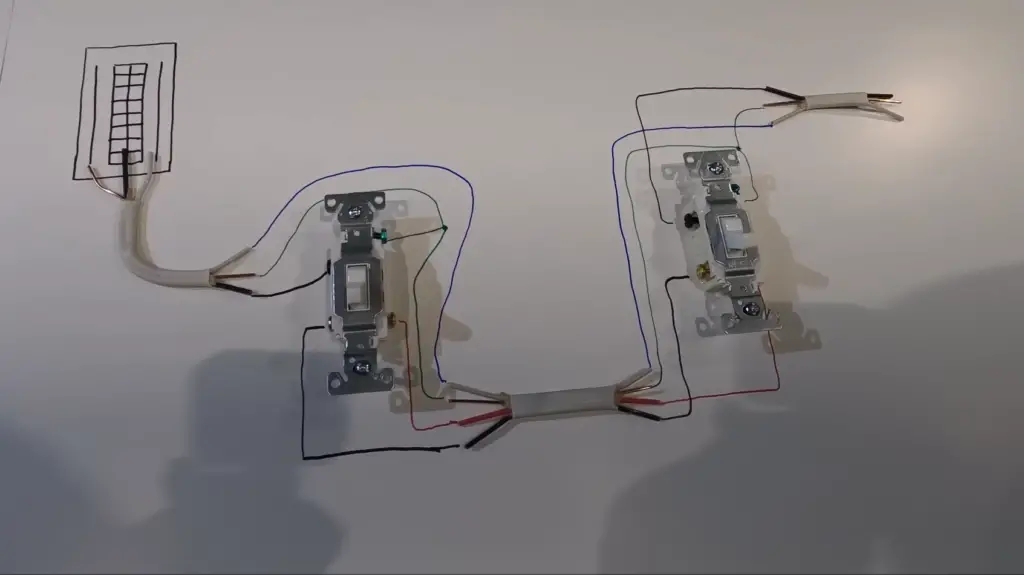
When Does Line vs Load Wire Matter?
Understanding the difference between line and load wires is crucial when installing GFCI outlets. The line wires must be connected correctly to ensure the GFCI protection functions as intended. On the other hand, the load wires should be properly connected to extend the protection to downstream outlets or devices.
If the line and load wires are mistakenly interchanged, the GFCI outlet will still provide protection to the outlets connected to the line terminals but not to the devices connected to the load terminals. This can create a potentially hazardous situation, as the downstream outlets or devices will be without GFCI protection.
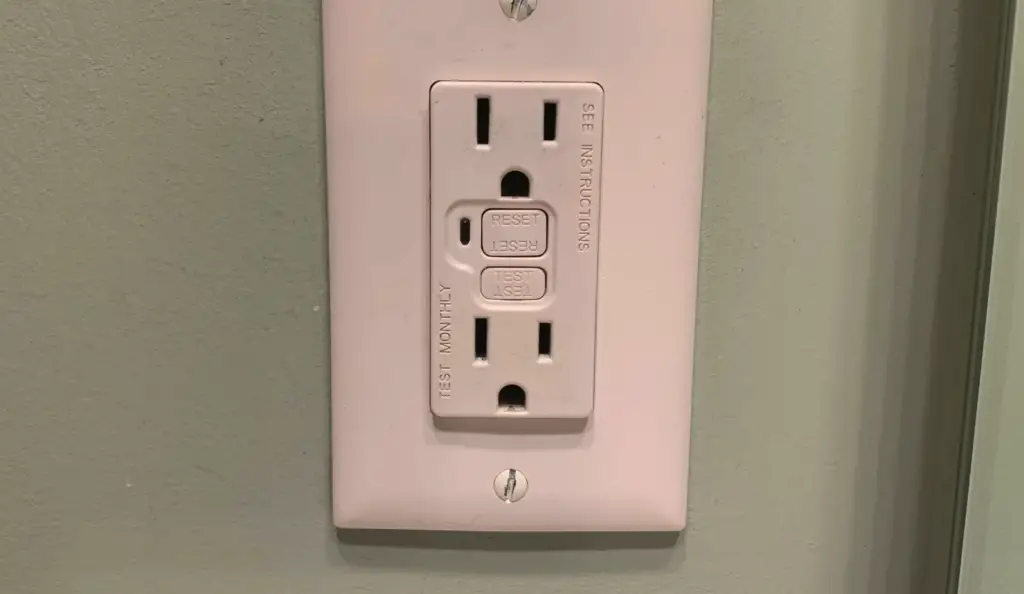
Consequences of Switching Line and Load on GFCI
Switching the line and load wires on a GFCI outlet can have serious consequences and compromise the safety of the electrical system. Here are some potential issues that may arise:
- Lack of GFCI Protection: If the line and load wires are switched, the GFCI outlet may still function as a regular outlet, but it will not provide GFCI protection to downstream outlets or devices. This increases the risk of electrical shocks or accidents in areas that should be protected;
- False Tripping: In some cases, switching the line and load wires can cause the GFCI outlet to trip repeatedly, even when there is no ground fault. This can be frustrating and lead to unnecessary power interruptions;
- Electrical Hazards: Without proper GFCI protection, electrical hazards may go undetected, increasing the risk of electric shock or electrical fires. This is especially critical in areas where the risk of moisture or electrical faults is higher [3];
To avoid these issues, it is crucial to correctly identify and connect the line and load wires according to the manufacturer’s instructions and applicable electrical codes. If unsure, it is recommended to consult a qualified electrician to ensure the proper wiring of GFCI outlets.
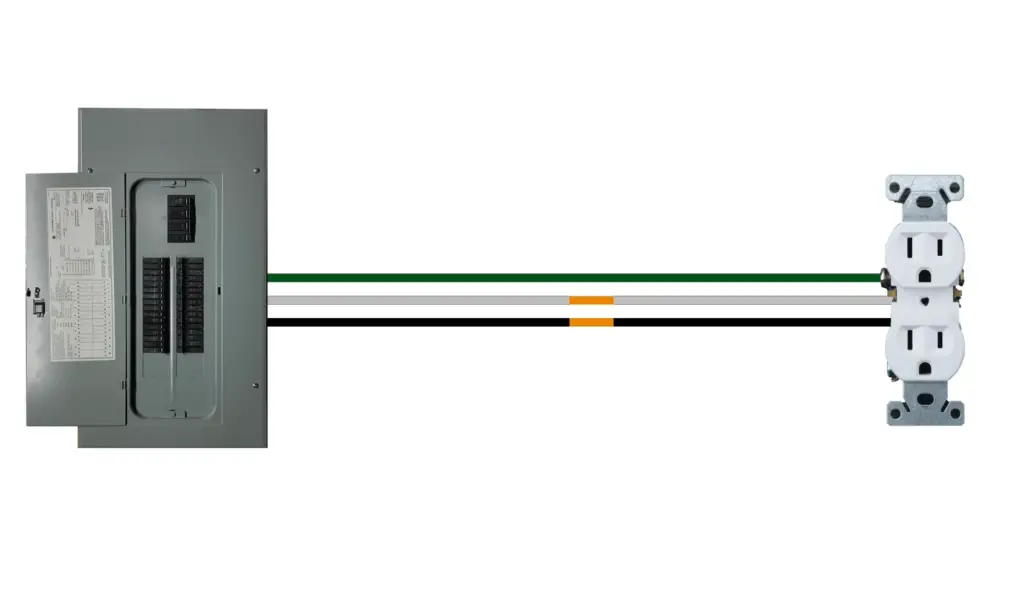
FAQ:
1. Can a GFCI outlet have both line and load connected to the same screw?
No, a GFCI outlet should not have both the line and load wires connected to the same screw. The line and load connections serve different purposes in a GFCI outlet. The line terminals are where the incoming power supply is connected, while the load terminals are used to extend the GFCI protection to downstream outlets or devices.
2. What happens if I switch lines and load on GFCI?
If you switch the line and load wires on a GFCI outlet, it will still function as a regular outlet but will not provide GFCI protection to downstream outlets or devices. This means that the outlets or devices connected to the load terminals will be without GFCI protection, increasing the risk of electrical shocks or accidents.
3. Will a GFCI trip on load?
Yes, a GFCI can trip on the load side if it detects a ground fault or leakage of electrical current. When a GFCI senses an imbalance between the current flowing in the hot wire and the current returning through the neutral wire, it quickly interrupts the power to prevent potential harm. This interruption can occur on either the line side or the load side of the GFCI outlet.
4. Why does GFCI trip when load is applied?
A GFCI can trip when a load is applied if it detects a ground fault or excessive leakage of electrical current [4]. The purpose of a GFCI is to monitor the flow of current in a circuit and quickly interrupt power if it senses a fault. When a load is connected, it increases the possibility of ground faults or imbalances in the electrical system, triggering the GFCI to trip as a safety measure.
5. Can you have 2 GFCIs on the same circuit?
While it is technically possible to have two GFCIs on the same circuit, it is generally not recommended. Having multiple GFCIs on the same circuit can lead to conflicts and cause unnecessary tripping or malfunctioning. It is best practice to have only one GFCI protecting a circuit to ensure proper functionality and to avoid confusion during troubleshooting.
6. Does a GFCI need a ground?
Yes, a GFCI requires a proper ground connection for it to function correctly. The ground wire provides a path for fault currents to safely flow to the ground, reducing the risk of electrical shock. The GFCI outlet should be connected to a grounded electrical system for optimal safety and protection.
7. How do I know if my GFCI is wired wrong?
If your GFCI is wired incorrectly, you may encounter some indicators or issues:
- GFCI Does Not Reset: When you press the reset button on the GFCI outlet, it does not restore power. This can be a sign that the wiring is incorrect or that there is a fault in the circuit;
- Frequent Tripping: If the GFCI outlet trips frequently, especially without any load or apparent ground faults, it could indicate improper wiring. Wiring the line and load wires incorrectly can cause false trips;
- Lack of GFCI Protection: If the GFCI outlet does not provide protection to downstream outlets or devices, even when wired correctly, it may indicate a faulty GFCI or an issue with the load wiring;
If you suspect that your GFCI is wired incorrectly, it is recommended to consult a qualified electrician to inspect and rectify the wiring.
8. Is GFCI at the breaker or outlet?
GFCI protection can be provided either at the breaker or at the outlet itself. In some cases, GFCI protection is integrated into the circuit breaker in the electrical panel. These are commonly known as GFCI breakers [5].
Both options serve the same purpose of providing ground fault protection, but the choice depends on the specific wiring configuration and the preferences of the installer.
9. Does line and load matter on a non-GFCI?
No, the line and load concept is specific to GFCI outlets. In a non-GFCI outlet, there is no differentiation between line and load wires. All the wires are typically connected to the respective terminals without any specific designation. However, it is still important to follow the appropriate wiring guidelines and ensure proper connections to maintain electrical safety.
10. Is GFCI better than ground?
GFCI and grounding serve different purposes in electrical safety:
- Grounding (earthing) is designed to redirect electrical faults or excess current to the ground, providing protection against electrical shocks and preventing electrical fires;
- GFCI protection, on the other hand, is specifically designed to detect ground faults, such as leakage of electrical current, and quickly interrupt the power to prevent potential harm;
Both grounding and GFCI protection are crucial for electrical safety, and they complement each other. While grounding provides a general level of protection, GFCI protection offers additional safety by detecting ground faults and providing rapid interruption of power.
11. Can I run another outlet from a GFCI outlet?
Yes, you can run additional outlets from a GFCI outlet. The GFCI outlet can serve as the starting point in a circuit, with the line wires connected to the GFCI’s line terminals. From the GFCI’s load terminals, you can extend the circuit to other outlets or devices. This allows the GFCI protection to be extended to the downstream outlets or devices, providing enhanced electrical safety.
12. What are the three types of GFCIs?
3 types of GFCIs commonly used are:
- GFCI Outlets: These are outlets that have built-in GFCI protection and can be installed in place of regular outlets. They are commonly used in areas where GFCI protection is required, such as bathrooms, kitchens, and outdoor locations;
- GFCI Breakers: These are circuit breakers with integrated GFCI protection. They can be installed in the electrical panel to provide GFCI protection to an entire circuit. GFCI breakers are commonly used in areas where GFCI protection is required but replacing all the outlets with GFCI outlets may not be practical;
- Portable GFCIs: These are compact, standalone devices that can be plugged into a regular outlet and provide GFCI protection to connected devices. Portable GFCIs are commonly used in situations where temporary or portable GFCI protection is needed, such as construction sites or outdoor events;
13. How many outlets can 1 GFCI protect?
A single GFCI outlet can protect multiple downstream outlets or devices, depending on the wiring configuration. When the line wires are connected to the GFCI’s line terminals and the load wires are connected to the load terminals, the GFCI protection extends to all outlets or devices connected downstream.
The number of outlets that can be protected by a single GFCI depends on the electrical load of the circuit and the capacity of the GFCI itself. It is important to consider the electrical code requirements and the manufacturer’s recommendations when determining the number of outlets that can be protected.
14. Can I wire a regular outlet to a GFCI?
Yes, you can wire a regular outlet to a GFCI outlet. The regular outlet can be connected to the load terminals of the GFCI outlet, which allows the GFCI protection to extend to the regular outlet. This is useful in situations where you want to have both GFCI-protected outlets and regular outlets in the same circuit.
15. What happens if you switch line and load?
If you switch the line and load wires on a GFCI outlet, it will still function as a regular outlet, but the GFCI protection will not extend to the downstream outlets or devices. The GFCI will only provide protection to the outlets or devices connected to the line terminals. This can create a potentially hazardous situation, as the downstream outlets or devices will be without GFCI protection, increasing the risk of electrical shocks or accidents.
16. Can I ground a GFCI to a metal box?
Yes, it is possible to ground a GFCI outlet to a metal box. The metal box should have a grounding conductor, typically a bare copper wire, connected to it. The grounding conductor can be connected to the grounding screw on the GFCI outlet, which provides a path for fault currents to safely flow to the ground. Proper grounding is essential for the safe operation of electrical systems and should be done following applicable electrical codes and regulations.
17. Where is GFCI required?
GFCI protection is required in specific areas and situations to enhance electrical safety. The specific requirements may vary depending on the electrical codes and regulations in your location, but here are some common areas where GFCI protection is typically required:
- Bathrooms: GFCI protection is required for all outlets in bathrooms, including those near sinks and bathtubs;
- Kitchens: GFCI protection is required for outlets located near sinks, countertops, and areas where electrical appliances are used;
- Outdoor Locations: GFCI protection is required for outlets in outdoor areas, such as decks, patios, garages, and near swimming pools;
- Garages and Workshops: GFCI protection is commonly required in areas where electrical tools and equipment are used, such as garages, workshops, and utility rooms;
- Crawlspaces and Basements: GFCI protection may be required in areas where moisture or potential ground faults are present, such as crawlspaces and unfinished basements [6];
18. Where should GFCI outlets not be used?
While GFCI outlets are highly recommended for enhanced electrical safety, there are a few situations where they should not be used:
- GFCI outlets should not be used with major appliances, such as refrigerators, stoves, or washing machines. These appliances require a dedicated circuit and should not be connected to a GFCI outlet;
- GFCI outlets should not be used in areas where the GFCI protection may cause unnecessary nuisance tripping. This includes areas with frequent power fluctuations or where electronic equipment is sensitive to power interruptions;
19. What should not be plugged into a GFCI outlet?
GFCI outlets are designed to provide protection for a wide range of electrical devices and equipment.
However, a few types of equipment are not recommended to be plugged into a GFCI outlet:
- Large Appliances: Major appliances, such as refrigerators, stoves, or washing machines, should not be plugged into a GFCI outlet. These appliances typically require a dedicated circuit and should be connected directly to a regular non-GFCI outlet;
- Equipment with Sensitive Electronics: Some equipment with sensitive electronics, such as computers, servers, or audio/video equipment, may be prone to nuisance tripping or power interruptions when connected to a GFCI outlet. It is recommended to consult the manufacturer’s guidelines or a qualified electrician to determine the best power protection strategy for such equipment;
For other general electrical devices and equipment, it is safe to plug them into a GFCI outlet to benefit from the enhanced electrical safety it provides.
20. Should I put GFCI outlets everywhere?
While GFCI outlets offer enhanced electrical safety, it is not necessary to put them everywhere in a residential or commercial space. However, there are specific areas where GFCI protection is highly recommended and may even be required by electrical codes. These areas include bathrooms, kitchens, outdoor locations, garages, crawlspaces, and basements.
It is important to assess the electrical safety needs of each area and consult the applicable electrical codes or a qualified electrician to determine the specific requirements for GFCI protection in your location. Installing GFCI outlets in these areas can significantly reduce the risk of electrical shocks and promote a safer electrical environment.
21. Can I install GFCI anywhere?
GFCI outlets can be installed in various locations to provide enhanced electrical safety. However, there are some considerations to keep in mind:
- GFCI outlets should be installed in areas where GFCI protection is required by electrical codes or regulations. These areas typically include bathrooms, kitchens, outdoor locations, garages, crawlspaces, and basements;
- GFCI outlets should be installed in accessible locations. They should not be hidden behind furniture or installed in areas where they may be difficult to reach in case of a trip or reset;
Proper wiring and installation techniques should be followed to ensure the GFCI outlets function correctly and provide the intended protection. It is recommended to consult the electrical codes or a qualified electrician for specific installation guidelines.
22. What is the difference between GFCI and AFCI?
GFCI (Ground Fault Circuit Interrupter) and AFCI (Arc Fault Circuit Interrupter) are two different types of electrical safety devices with distinct functions:
- GFCI: GFCI protection is designed to detect ground faults, such as leakage of electrical current to the ground. It quickly interrupts the power supply to prevent electrical shocks. GFCI protection is typically provided in areas where the risk of ground faults is higher, such as bathrooms, kitchens, and outdoor locations;
- AFCI: AFCI protection is designed to detect potentially dangerous arc faults, which are sparks or electrical discharges that can occur when there are loose connections or damaged wires. AFCI protection is commonly used in areas where arc faults can lead to electrical fires, such as bedrooms, living rooms, and other living spaces;
While both GFCI and AFCI offer additional protection against electrical hazards, they serve different purposes. It is important to understand the specific requirements and recommendations for each type of protection based on the electrical codes and regulations in your location.
23. Does a GFCI need 2 wires?
Yes, a GFCI outlet requires two wires for its proper functioning: the line wire and the neutral wire. The line wire carries the incoming electrical power, while the neutral wire provides the return path for the current.
These two wires are essential for the GFCI outlet to monitor the balance of current flow and detect ground faults or leakage of electrical current. Proper wiring and connection of both the line and neutral wires are necessary for the GFCI outlet to provide effective protection against electrical shocks.
24. How many amps does a GFCI trip at?
GFCI outlets are typically designed to trip at a current imbalance of around 5 milliamperes (mA) to 30 milliamperes (mA). This level of current imbalance indicates the presence of a ground fault or leakage of electrical current.
When the GFCI detects such an imbalance, it quickly interrupts the power supply, typically within milliseconds, to prevent electrical shocks. The specific trip threshold may vary depending on the GFCI model and its intended application, but the range mentioned above is common for residential GFCI outlets.
25. How do I stop my GFCI from tripping?
If your GFCI outlet is tripping frequently, there are a few potential causes and troubleshooting steps you can take:
- Check for Ground Faults: Inspect the area and the devices connected to the GFCI outlet for any signs of ground faults, such as damaged cords or water leaks. Ground faults can trigger the GFCI to trip. Address any issues found and repair or replace faulty equipment;
- Reduce Electrical Load: GFCI outlets have a maximum current rating. If the electrical load connected to the GFCI is too high, it can cause the GFCI to trip. Consider redistributing the load or reducing the number of devices connected to the GFCI to stay within its capacity;
- Reset the GFCI: Sometimes, a temporary fault or surge can cause the GFCI to trip. Reset the GFCI by pressing the “RESET” button on the outlet;
- Test and Replace the GFCI: GFCI outlets can wear out over time. Test the GFCI using the “TEST” and “RESET” buttons to ensure it is functioning correctly. If the GFCI fails the test or continues to trip frequently, it may be necessary to replace the outlet with a new one;
If troubleshooting steps do not resolve the issue or if you are unsure about electrical work, it is recommended to consult a qualified electrician for further assistance.
26. Will a GFCI trip if it gets wet?
GFCI outlets are designed to provide protection against ground faults, including those that can occur when the outlet or its surroundings get wet. When a GFCI outlet comes into contact with water, it can cause a ground fault, resulting in the GFCI tripping to interrupt the power supply. This rapid interruption helps prevent electrical shocks that could occur due to the presence of water.
However, it’s important to note that excessive exposure to water or prolonged moisture can cause damage to the GFCI outlet and compromise its functionality. If a GFCI outlet is frequently exposed to water or submerged, it should be promptly inspected, dried, and, if necessary, replaced to maintain its effectiveness and ensure electrical safety.
27. What happens if you overload a GFCI?
If you overload a GFCI outlet by connecting electrical devices or equipment that collectively draw more current than the GFCI’s rated capacity, it can lead to several consequences:
- Tripping of the GFCI: Overloading the GFCI can cause it to detect the excessive current flow and trip to interrupt the power supply. This is a protective mechanism to prevent overheating and potential hazards;
- Damage to the Electrical Devices: Overloading the GFCI can strain the connected electrical devices, potentially causing them to malfunction or get damaged. Excessive current can lead to overheating, circuit failures, or even electrical fires;
- Risk of Electrical Hazards: Overloaded circuits can generate excessive heat, leading to electrical hazards such as electrical fires, melting of wires, or damage to the electrical infrastructure;
To avoid overloading a GFCI outlet, it is crucial to be aware of its rated capacity (usually stated in amps) and ensure that the total electrical load connected to the outlet does not exceed this capacity. Proper load distribution, use of power strips with built-in circuit breakers, and consulting an electrician for load calculations can help prevent overloading and maintain electrical safety.
28. Why does a GFCI trip with no load on it?
There can be several reasons why a GFCI outlet trips even with no load connected to it:
- Ground Faults in the Wiring: GFCI outlets continuously monitor the balance between the line and neutral currents. If there is a ground fault in the wiring, even without any load connected, the GFCI can detect the leakage of current and trip to interrupt the power supply. Faulty wiring, damaged insulation, or improper grounding can cause such ground faults;
- Faulty GFCI Outlet: Sometimes, the GFCI outlet itself may be faulty or damaged, leading to false trips. Age, wear and tear, or manufacturing defects can contribute to the malfunction of the GFCI. In such cases, replacing the GFCI outlet with a new one may resolve the issue;
- Wiring Errors: Incorrect wiring or improper installation of the GFCI outlet can cause it to trip unexpectedly. It is important to follow the wiring instructions provided with the GFCI outlet and ensure proper connections;
If a GFCI outlet is tripping without load or you are experiencing frequent and unexplained tripping, it is recommended to consult a qualified electrician to inspect the wiring, troubleshoot the issue, and ensure electrical safety.
Useful Video: LINE vs LOAD on a GFCI Outlet
References
- https://everydayhomerepairs.com/gfci-outlet-line-load-terminals
- https://www.thespruce.com/line-or-load-gfci-connection-1152785
- https://www.electronicstalk.org/line-vs-load-gfci/
- https://pocketsparky.com/knowledgebase/gfci-outlet-wiring-line-vs-load/
- https://www.mistersparky.com/pleasantville/about-us/blog/2022/june/line-vs-load-wire-what-you-need-to-know/
- https://h-o-m-e.org/gfci-line-vs-load/





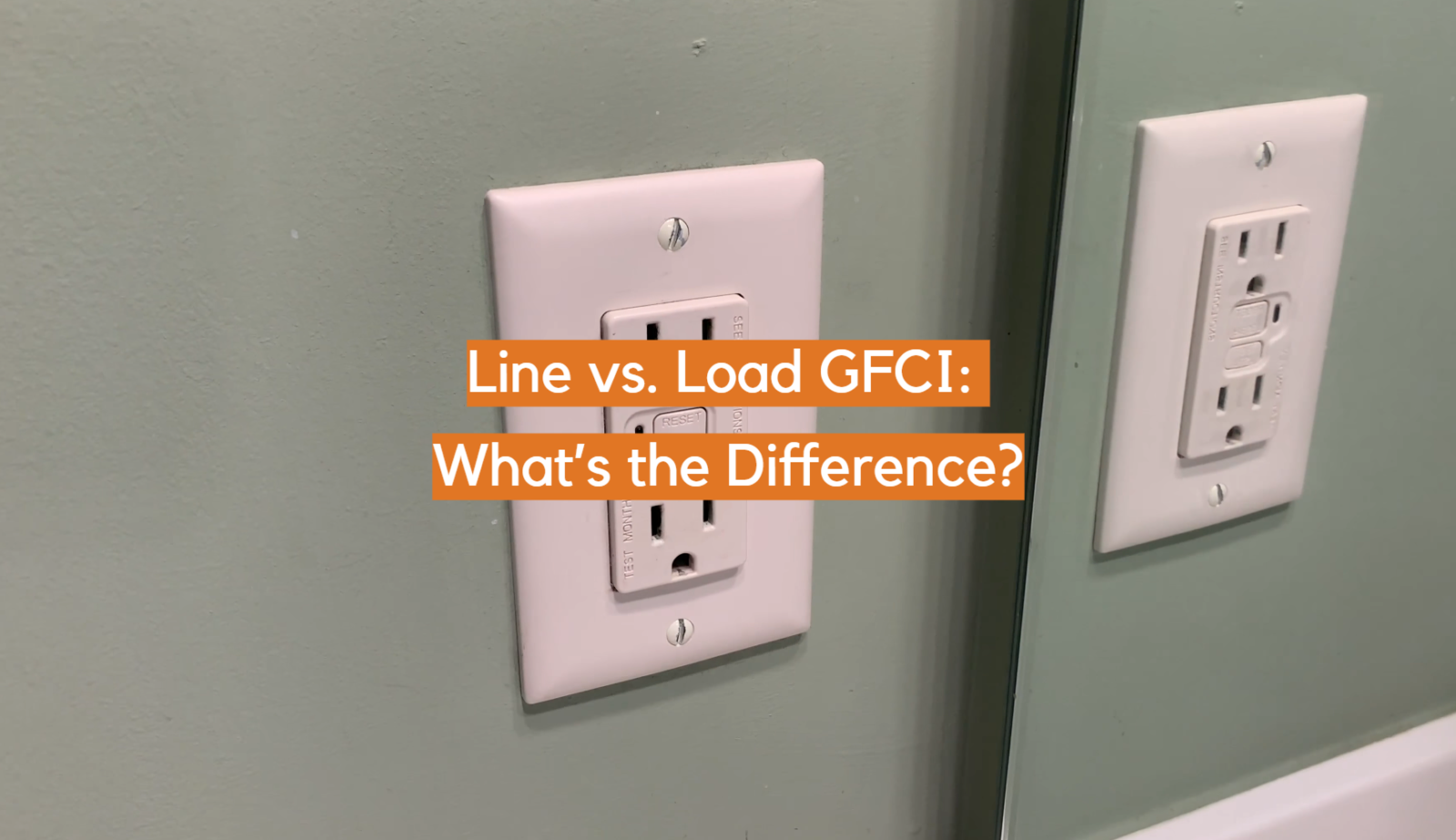





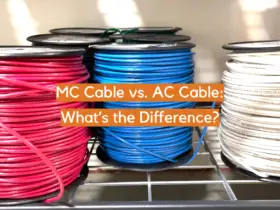
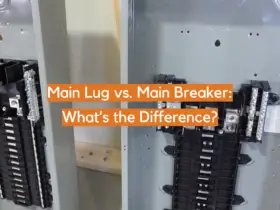

Leave a Reply